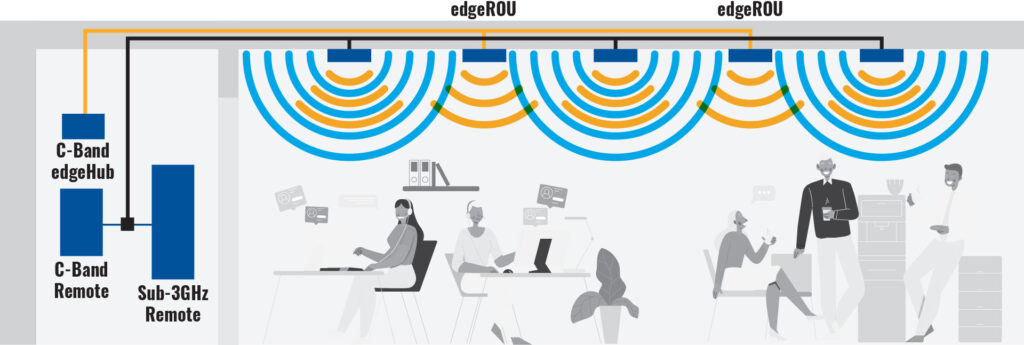Mobile 5G technology promises to deliver many innovative new services and capabilities, including higher mobile capacity, faster data speeds, and ultra-reliable low-latency connectivity. These advancements are made possible by fundamental changes in the communications network architecture. However, these evolutionary transformations also can affect how 5G networks perform in conjunction with in-building Distributed Antenna System (DAS) systems.
So, what do you need to know about 5G networks to ensure your building tenants, employees, and visitors continue to experience seamless, always-on mobile connectivity?
Introducing 5G NR
As mobile networks evolve from 4G to 5G, significant architectural changes transform how these next-generation networks operate. A key aspect of this transformation is an improved wireless air interface called 5G New Radio (NR), which enables high-capacity throughput delivery. This technology allows the 5G radio access network (RAN) to use radio frequency (RF) spectrum more efficiently for significantly faster and more responsive mobile experiences than legacy 4G LTE networks.
The newest spectrum released for use with 5G NR uses Time Division Duplexing (TDD) — a method of separating uplink (UL) and downlink (DL) transmissions. The TDD method enables UL and DL functions to occur on the same frequency, unlike Frequency Division Duplexing (FDD), which requires two separate RF frequencies to send and receive data. TDD allows the 5G NR to accommodate large blocks of contiguous spectrum, supporting larger channel widths to provide greater capacity and flexibility.
However, the new 5G spectrum exists at higher frequencies with shorter signal propagation, limiting coverage, particularly indoors. To take full advantage of the potential that 5G offers, network managers need to optimize in-building DAS deployments, which may require the replacement of existing antennas and coaxial splitters to ensure high quality for maximum service availability.
Maximize 5G In-Building Connectivity
When deploying and configuring a DAS system today, it’s critical that you consider all the available 5G frequencies used in adjacent macrocell networks and recognize how each frequency band will impact your in-building DAS deployment. To better understand 5G NR technology and the new frequencies that 5G networks use, download the technical brief How to Make the Most of 5G for Improved In-Building Connectivity
